How to Better Read Flags in Forex
Forex Flag Pattern Trading Strategy
The flag blueprint is one of the about popular nautical chart patterns. The principal reason for that is how simple information technology is to spot the flag pattern on the chart. Most chart patterns become easy to spot after the fact, while the flag pattern gets detected style before the completion.
In this commodity, I will explicate to y'all how to trade the flag design stride by step. Beneath is a list of what will be covered:
- What is a flag pattern
- Flag pattern identification guidelines
- How to measure target
- Where to place the stop-loss
- How to enter
What is a flag blueprint?
There are ii dissimilar flag patterns bullish and bearish flag patterns. To continue this article as brusque as possible, I am going to explain how to trade the bullish flag blueprint. For the surly flag pattern, you'll practice the opposite direction.
Flags are trend continuation patterns. You lot expect the breakout to be in the direction of the significant prevailing tendency. They are a complex correction or pullback.
Flag pattern identification guidelines
A bullish flag pattern is formed when yous see a bullish impulsive leg, followed by a downsloping rectangle divisional past two parallel trend lines. For best results, the rectangle should course by at least ii swing highs and two swing lows. Tall and broad flag performs ameliorate than short and narrow flags. The correction motility should not exist steep; corrections that take a slope between 0-45 degrees are the best performers.

Forex flag pattern explanation and meaning
Flag blueprint case
In the nautical chart below, nosotros accept ii Bullish flags that formed afterwards each other. Each ane started by a significant bullish impulse, followed by a complex correction bounded between two trendlines forming the downsloping rectangle. This is the nearly common behavior, a fast-moving bullish price activeness, followed by a circuitous correction that forms the flag.

Bullish flag pattern measuring target
Flag Pattern Identification Characteristics
- Steep, quick price trend forms the pole
- Price action bounded by two parallel tendency lines. Prices
usually, become against the prevailing tendency - The slope of the flag has a gradient between 0-45 degrees
Different types of flag patterns
In the example below, you tin can see a unlike kind of flag design. This is as well a valid pattern, while it is not equally common as the flags with the downsloping rectangles. The strong bullish impulse is evident, while the correction was not sloping down. This time the cost went sideways in a range instead. A flag with a long-range normally has a precipitous momentum break out and often reaches target fast.
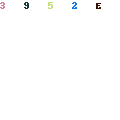
Bullish flag pattern with the flag as rectangle
The pennant flag pattern
The pennant is also a flag blueprint, the pole rules are the aforementioned, a robust bullish leg, only instead of a downsloping rectangle, the price swings form a triangle either downsloping or symmetrical. Pennants are more than common than the flags with a sideways range. A pennant is also traded equally a Triangle every bit well. But be careful when trading pennants and Triangles, you will see many fakeouts. As I am writing this article, I did also publish my Weekly Trade Ideas video on my YouTube channel. There was a great example of a pennant/Triangle that formed on AUDUSD, and I explained in detail how a fakeout may happen and where it may reverse again. Here is the link for that Weekly Merchandise Ideas video , it will start where I was explaining the trade thought. The main take here is not to merchandise all the patterns just cause they formed, be picky, and with time and much practicing, you may also start predicting possible fakeouts like that one.
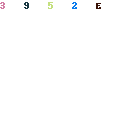
The pennant flag pattern
Don't wait for the perfect patterns but
Every bit you come across in the chart below, three flag patterns in a row weren't "Textbook patterns." The marketplace is never perfect, and if you would only trade the patterns that you run into in textbooks, you'll miss many dandy opportunities. These defected flag patterns are my favorite ones. All of them had made a trapping motility before they broke the trendline, which is a sound signal that the market may continue lower. When I encounter these traps happening alee of the existent break of the trendline, I get very interested and experience much more comfortable taking the trade than trading the textbook pattern. The most crucial level here is the lower trendline, and when information technology is broken, then the signal to sell is done.
 Flag blueprint failure
Flag blueprint failure
Like all chart patterns, flags are not immune to failure. Then is at that place a mode to avoid pattern failure? Yes, there is a way that I volition cover afterward, but even that volition not forestall you lot totally from a losing trade or entering a pattern that may neglect. In the chart below, y'all can see how the flag formed following the aforementioned identification guidelines mentioned above. In this instance, a bearish flag, the pole had a robust surly impulse forming the pole of the flag, followed by the rectangular correction. But, in this case, there was no trend continuation, price broke the correction rectangle to the upside instead of a trend continuation lower.

Flag pattern failure
Flag patterns trading tactics
There are many ways to trade the flag patterns. Today I will embrace the virtually common techniques and how I trade the flag pattern. The textbook strategy is straightforward, but I similar to add some confluence when taking trades. No matter if I am looking at a candlestick blueprint or a chart pattern, I want always to see at to the lowest degree i confluence to enter a trade. In the examples beneath, I will explain more than in particular how I use confluence to enter a flag design trade.
Measuring targets

Flag patterns trading tactics and target measuring
Measuring the target or the exit point when trading the flag pattern is pretty simple. You measure the length of the pole and and then project information technology from the location of the flag breakout. In the nautical chart below, you have an example of how to measure your target. There should be no confusion during the planning of the target here. It is a pretty straightforward process. When trading the right flag pattern, information technology should be effortless to measure out the target.
Here you have another example, this fourth dimension we accept a surly flag pattern. The measuring dominion is the same. You lot measure out the length of the pole, and you brand a project of that from the breakout point of the flag.
Flag blueprint entry and exit strategies
There are many means to plan and merchandise the flag design. I will outset with the most common entry and target planning. When trading flags or whatever blueprint, information technology is essential that you notice the right blueprint. To be certain of the pattern you are looking at, make certain that you apply the identification guidelines mentioned to a higher place. Consult the chart below as I review it.
So, how to enter a flag design trade?
The textbook entry of the flag pattern is to place a trade as soon every bit yous have a break and shut exterior of the flag channel. So if it is a daily chart, you enter the trade when there is a daily candle close to a higher place the channel upper trendline. The same would be if y'all were trading a flag that formed on the 1H time frame; you lot enter afterward a 1H candle close above the flag channel.
Similar all other patterns, the college the time frame, the stronger is the bespeak. But all the rules are the aforementioned, both for entry, targets, and cease-loss placement.
For targets, as explained earlier, the textbook target for the flag blueprint trading is to measure the pole and project it from the breakout indicate. While as you see in the example below, I am using another technique. When there is a pregnant swing high as below, I endeavour to have one-half profit at that significant swing high. It is an area of resistance, and we tin never exist sure that the price will pause higher. Afterwards closing half the position, I then move my Stop-loss to breakeven and expect for the cost to either reach the full target or my stop-loss.
Where to put the Stop-loss?
For the stop-loss (SL) placement, I use the ATR indicator to calculate the cease-loss level. The chief rule is to place your SL below the low of the flag channel. But you also have to add together some buffer, so you lot don't get stopped out on a short term fasten in the cost. That'due south when you lot need to check the ATR indicator and add that value as the buffer below the low of the channel. So if y'all are trading out of the daily nautical chart, y'all await for the ATR value during your entry. Let's say the ATR is showing l pips, and then you put your SL 50 pips below the depression of the flag. You do the same if you are trading out f the 1H chart, but this fourth dimension we look at the 1H ATR value to use as buffer beneath the low of the flag.
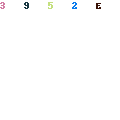
Flag pattern entry and exit strategies
How to trade flag pattern before the breakout
Wow, could that exist possible? Well, yes, information technology is. Most textbooks tutoring on how to trade patterns teach you lot very late entries. I don't similar that, despite the instance of a amend confirmation. To me, information technology feels similar I am chasing the price when entering subsequently a breakout. And then when not spice it upward a petty and get a much meliorate entry and way better risk to reward.
Now, await a moment, and don't get as well excited. Just because I am going to show you how I similar to trade the flag pattern, does non mean it is the best and only mode. Go on in mind, the example above is what yous should exist doing if you want a more condom arroyo.
Flag blueprint trading á la Pierre
There is ane flag pattern that I like to enter before the breakout. For me to have such a trade, I want to run across something like to the example below. Consider the chart beneath, and you'll see a significant bullish impulse The bullish move, broke in a higher place two major swing highs, making the idea to get long on the retest an like shooting fish in a barrel decision.
Merchandise rules, the price must make a significant surge; in this case, a bullish impulse. The price must break above a significant swing high, signaling a bullish strength and control. When the toll starts the correction and forming the flag, I depict a Fibonacci retracement. What I want to see is that the 61,8 Fibonacci retracement is at the previous swing high. I too use the RSI indicator, and the RSI must reach the oversold expanse before the price reaches the 61,8. Besides, if RSI makes a bullish divergence, that is a big plus but not a must. If those rules got met, I either place an order but above 61,viii, or open trade at market depends if I can exist on screens and watching the charts or not.
Since the toll does a deep correction to the 61,8 Fib retracement, nosotros tin can put the Stop-Loss below the depression of the pole and still take an fantabulous risk to reward. Trading the flag this way need much subject, and y'all have to wait till the rules got met. Also, this design does not appear as much as a regular flag pattern that usually corrects between 38,two-50%.

Flag blueprint entry and exit strategies
Trading the flag pattern with other confluences
Beneath we have some other example where you lot could trade the flag pattern ahead of the breakout. The first dominion of a significant impulse is at that place. The toll broke two key swing highs also. The correction started later that break above the tops. When the toll reaches the previously broken structure and at that aforementioned level, the 200 Moving Average (MA), we got a pin bar (Hammer). That hammer is a reversal candlestick pattern, and since information technology happened at the cardinal structure level and the 200 MA, that is my trigger candle. Just for more confirmation, I wait for another candle to close above the high of the hammer. If the next candle closes above the top of the hammer, then I enter a long merchandise at the open of the next candle.
For stop-loss, I use the same rule, which is at least 1 ATR below the depression of the hammer in this case. Target one is the high of the flag'southward pole and the second target at the adjacent meaning swing loftier or at least a one:2 risk to reward.
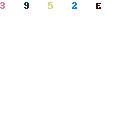
Trading the flag blueprint with other confluences
When not to merchandise the flag blueprint
Many times y'all hear traders saying that to take the right winning rate, you must trade each pattern y'all see and that met your rules. I kind of empathise why mainly cause when you do your backtesting, you do count all the patterns, both the failed ones and the winners. But over again, trading a flag design that forms but below a key resistance area is not a adept idea. In those cases, improve to wait for the break out to happen first and so expect for a new flag pattern to go long.
In the chart beneath, we meet a clear resistance expanse looking left. The toll did class a bullish flag and broke out of the flag channel. But as soon as the price reached the resistance surface area, the cost reversed downward in a fast bearish movement. Then it is a good idea to take a rule not to trade the flag patterns that form just below key resistance areas.
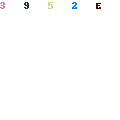
When not to trade the flag design
I hope that you lot found this article helpful and that y'all got a better agreement of how to merchandise the flag pattern. Keep in mind to trade these patterns in the direction of the prevailing major trend for the all-time performance. Too, proceed in mind that market construction is a very important aspect of trading whatever chart pattern. In my PA-FX Trading Form and Mentoring Program, I practise a whole session about market structure. To me, the construction is ever first and everything else comes after. So when I mention an indicator that is simply to be used as the confluence with structure and non to be traded on its own.
New to my blog? Subscribe and be the first to become notified when I mail service a new article.
Happy Trading! Please read the adventure disclaimer here.
andersonanders1938.blogspot.com
Source: https://www.pa-fx.com/2019/12/13/forex-flag-pattern-trading-strategy/
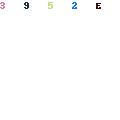
0 Response to "How to Better Read Flags in Forex"
ارسال یک نظر